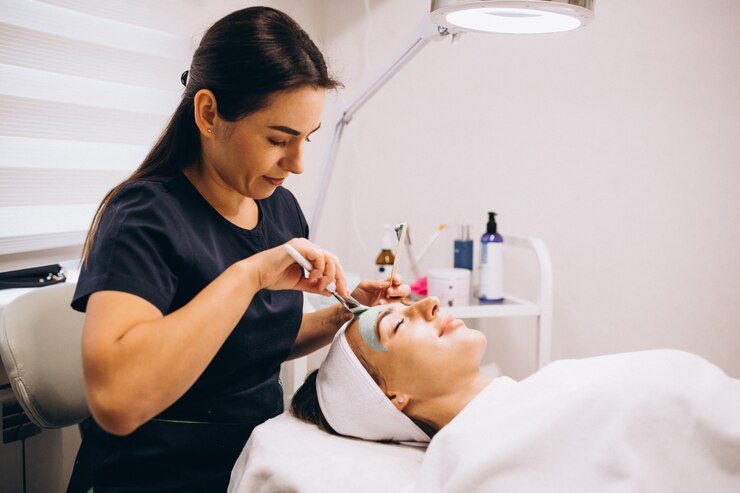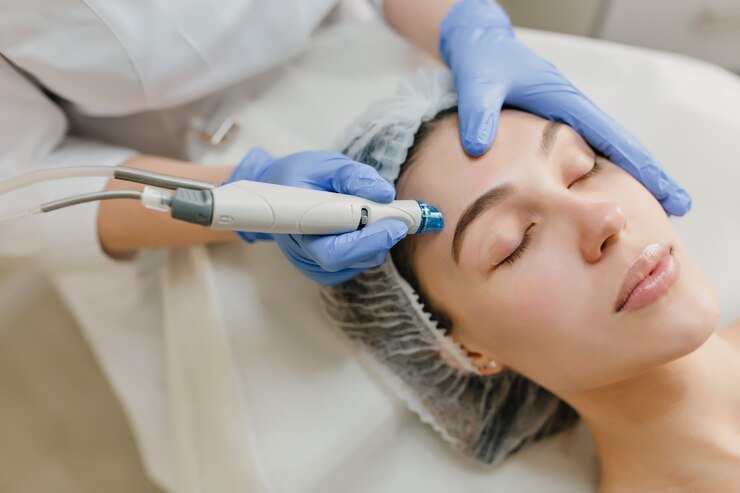Dermatology
Dermato Logy

Dermatology for iMed Billing
Dermatology is a specialized field of medicine in the United States that focuses on diagnosing, treating, and preventing disorders affecting the skin, hair, and nails. Dermatologists, the medical professionals who practice dermatology, not only address a wide range of conditions affecting these areas but also play a crucial role in educating the public about their skin health and preventive measures. They provide care for both children and adults, emphasizing the importance of early sign and detection and prevention.
The American Academy of Dermatology (AAD) defines dermatology comprehensively, emphasizing its broad scope. Dermatology involves the study, research, and diagnosis of both normal and pathological conditions of the skin, fat, hair, nails, and mucous membranes. This includes managing disorders, diseases, cancers, cosmetic, and aging conditions through various investigative and therapeutic methods. Dermatological treatments can involve dermatosis-pathology, medications (both topical and systemic), dermatologic surgery, cosmetic surgery, immunotherapy, phototherapy, laser therapy, radiotherapy, and photodynamic therapy. This comprehensive and detailed approach ensures that all aspects of dermatological health are addressed.


The field of dermatology in the U.S. is diverse, with several subspecialties

Skin diseases are prevalent in the United States, with studies showing that skin disorders are among the most frequent reasons for individuals to seek medical advice. One in three Americans is estimated to suffer from a skin disease at any given time. This high prevalence impacts people across all age groups, from infants to the elderly.


Detailed Components
Medical Dermatology
This area deals with a wide range of skin conditions, skin color, including dermatitis, psoriasis, urticaria, connective tissue diseases, skin infections, pigmentation disorders, skin conditions related to internal diseases, and acne and rosacea. It includes the treatment of both adults and children (pediatric dermatology)
Surgical Dermatology
Focuses on the removal of skin lesions such as melanoma, nonmelanoma skin cancer (NMSC), and other noncancerous lesions through methods like curettage and cautery, cryotherapy, excisional surgery, and photodynamic therapy. Mohs micrographic surgery, a precise surgical technique for removing skin cancer, is also a significant part of this field.
Cosmetic Dermatology
This specialty focuses on enhancing the appearance of the skin(skin color), hair, and nails. It is important to note that while cosmetic dermatology is a part of dermatology, not all dermatologists practice cosmetic dermatology. Treatments in this area include laser procedures, scar removal, hair implants, injectable fillers, and botulinum toxin (Botox) injections.
Some of the most common skin disorders that dermatologists treat in the U.S. include
-
Skin Cancer
Various types, including melanoma and nonmelanoma skin cancers
-
Warts
Caused by viral infections.
-
Skin Infections
These can be fungal, viral (like herpes simplex), or bacterial.
-
Dermatitis
Conditions such as atopic dermatitis (eczema), which affects many children.
-
Psoriasis
A chronic autoimmune condition
-
Acne
A prevalent issue, particularly among adolescents.
-
Hand Dermatitis
Often results from contact with detergents and household chemicals.
-
Alopecia
An autoimmune disorder leading to hair loss


Various dermatological examinations and procedures are utilized to diagnose and treat these conditions in the U.S
Dermoscopy
A dermato-scope, a handheld device, helps in the identification and diagnosis of skin lesions through magnification and illumination
Microbiology Samples
Swabs from skin lesions are used for viral and bacterial cultures.
Skin Scraping
A method to collect skin cells for fungal examination by scraping the skin with a scalpel.
Skin Biopsy
Removal of a skin sample for histopathological examination, which can be performed as a shave, punch, or excision biopsy
Intralesional Steroid Injection
Used to treat conditions like hypertrophic or keloid scars, acne cysts, vitiligo, and alopecia.
Phototherapy
Utilizes narrowband ultraviolet (UV) radiation to treat conditions such as eczema, psoriasis, vitiligo, and pruritus

In conclusion, dermatology is a multifaceted and essential field within medicine in the United States, addressing a broad spectrum of conditions that significantly impact individuals' health and quality of life. Dermatologists employ a variety of advanced techniques and treatments to manage and improve skin health



What is a Dermatologist?
A dermatologist is a medical doctor specialized in the diagnostics, treatment, and prevention of skin, hair, and nail disorders. Dermatologists undergo extensive training, including four years of medical school, a one-year internship, a three-year residency in dermatology, and often further specialization through fellowships. This optimized training equips them with the knowledge and skills to treat a verity of conditions, from common ailments like acne and eczema to serious diseases like melanoma.

Terminology in Dermatologist?
Dermatology terminology includes a vast array of terms used to describe skin conditions, treatments, and anatomical features. Key terms include
-
Lesion
Any abnormal change in the skin
-
Erythema
Redness or Harnish of the skin caused by increased blood flow.
-
Pruritus
Itching.
-
Macule
A flat, distinct, discolored area of skin.
-
Papule
A small, raised, solid pimple or swelling.



Dermatological Investigations and Tests
Dermatological investigations and tests are essential for diagnosing various skin conditions. Common procedures include

Detailed Components
Skin Biopsy
Removing a small or tiny sample of skin for histopathological examination, which can be done via shave, punch, or excisional biopsy
Patch Testing
Identifying allergens causing contact dermatitis by applying patches with different substances on the skin
Microbiology Samples
Swabbing skin lesions for bacterial, viral, or fungal cultures.

The Role of Surgery in Dermatology
Surgery plays a crucial role in dermatology, particularly for treating skin cancers and other significant lesions. Dermatologic surgical procedures include:
Excisional Surgery: Removing skin lesions with a margin of healthy tissue.
Mohs Micrographic Surgery: An authentic technique for removing skin from upper layer cancer while preserving as much healthy tissue as possible.
Cryotherapy: Using extreme cold or icing to destroy abnormal tissue.
Laser Surgery: Utilizing laser technology to treat various skin conditions, including scars and vascular lesions.

Dermatopathology
Dermatopathology is a subspecialty focusing on the study of skin diseases at a microscopic level. Dermatopathologists analyze skin biopsy samples to provide precise diagnoses, aiding in the treatment of complex skin disorders
Ethnic Dermatology
Ethnic dermatology addresses the unique skin care needs and conditions prevalent among different ethnic groups. This includes understanding variations in skin structure, function, and the presentation of diseases to provide culturally competent care
Forensic Dermatology
Forensic dermatology involves the application of dermatological knowledge in legal contexts. Dermatologists may assist in identifying victims, determining causes of skin injuries, and providing expert testimony in court cases
Teledermatology
Teledermatology uses telecommunication technologies to provide dermatological services remotely. This approach increases access to care, particularly in underserved areas, and can involve live video consultations or store-and-forward methods where images and patient information are sent for later review by a dermatologist.


CPT Codes in Dermatology

Skin Cancer Foundation
These resources offer comprehensive information on skin conditions, treatments, and preventative care, helping patients make informed decisions about their skin health.
Dermatology CPT (Current Procedural Terminology) codes are specific codes used by dermatologists and healthcare providers to report medical, surgical, and diagnostic procedures related to skin, hair, and nail conditions. These codes are essential for accurate billing and reimbursement for services provided. Here's an overview of some common dermatology CPT codes:

Evaluation and Management (E/M) Codes
Office or other outpatient visit for the E&M of a patient, varying by complexity and level of service provided
These codes cover a wide range of surgical procedures performed by dermatologists, including
Shave, excision, destruction, and biopsy procedures (e.g., 11100, 11300, 17110)
Simple and intermediate repair of wounds (e.g., 12001, 13132).
Precise surgical technique for removing skin cancer (e.g., 17311).
Dermatopathology Codes
Pathology examination of tissue, including skin specimens (e.g., 88305 for tissue examination, 88321 for consultation).
Special stains and ancillary studies performed on tissue specimens
Phototherapy and photochemotherapy services for the treatment of various skin conditions, skin color, including psoriasis, vitiligo, and eczema (e.g., 96910 for UV light therapy).
Destruction of benign lesions such as warts, skin tags, and molluscum contagiosum (e.g., 17110).
Incision and drainage of abscesses or cysts
At iMedbillingPro, we are aware of the challenges and suffering that healthcare providers encounter when delivering first-rate patient care.
Copyright © 2024 iMed Billing Pro All Rights Reserved.

